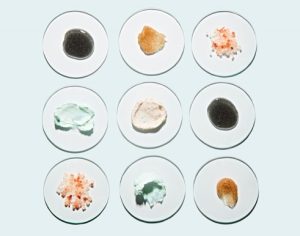About
For decades, synthetic microplastics have been employed as inclusions in many products which we use in massive amounts on a daily basis, such as cosmetics, hygiene and cleaning products or paints. Microplastics pose an immediate and major environmental challenge of global scale, with deleterious consequences on life across aquatic, terrestrial and atmospheric ecosystems, and potentially impact human health. Thus, there is a clear need for novel, scalable, and sustainable alternatives that are multi-functional, tunable and commercially viable. Our innovative technology allows reproducible yield of these green biogenic crystals, spanning orders of magnitude in size (Ø 100 nm – 100 µm), with a high degree of tunability and reproducibility in properties. We are currently at the laboratory-level production stage, producing up to 100 grams of biogenic particles per week. Benefits: – Biogenic, carbon-negative and eco-friendly – Rapid and easy to synthesize and recover, at normal ambient conditions, low-cost investment – Wide stability range under a range of conditions and long shelf-life – Scalable production, tailored functionality, flexible shape, size, and properties can be easily incorporated into existing protocols – Strong potential to complement, if not fully replace, synthetic additives including microplastics Applications: These biominerals serve as excellent alternatives to microplastics, synthetic adhesives, additives, etc., in fast-moving consumer goods (FMCG) such as cosmetics, hygiene, cleaning products, but also as fillers in paints or tires. Intellectual property: – Luxembourgish Patent LU502733 – Granted – National Phases: EP, US, IN – Pending process
Organisation and Partners
- Department of Physics and Materials Science
- Faculty of Science, Technology and Medicine (FSTM)
- Physics of Living Matter
- Partnership, Knowledge & Technology Transfer Office, UL
- Peintures Robin SA (Luxembourg)
- Goodyear Luxembourg
Project team
-
Anupam SENGUPTA
-
Sarah LE GUENIC
